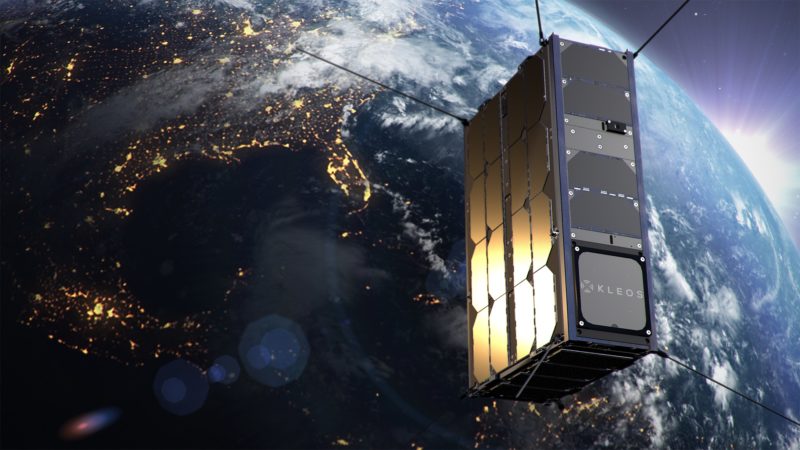Latest News

Photo: Kleos Space
Kleos Space Inc. on Monday said they have entered into a research and development agreement with the U.S. Navy for an experimentation effort that will use radio frequency (RF) sensing data provided by the company’s satellites for maritime domain awareness.
The demonstrations for realistic mission purposes will include sanctions reporting, embargo transshipment monitoring, search and rescue, resource management, fisheries control, smuggling and border security. Kleos Space Inc. is the U.S. subsidiary of Luxembourg-based Kleos Space S.A.
The cooperative research and development agreement (CRADA) is with the Naval Surface Warfare Center-Crane and is the first phase of the Office of Naval Research SCOUT Experimentation Campaign to quickly examine technologies against operational challenges. The campaign is assisting the Joint Interagency Task Force-South, which is charged with detecting, monitoring and targeting drug trafficking in the air and maritime domains.
The exercises will begin in mid-2022 and include a series of “sprint” exercises and evaluations leading to a main experimentation event in the second phase of the campaign. The second phase could include contracts for 12- to 18-month rapid prototyping efforts.
Kleos currently operates 12 small satellites in Low-Earth Orbit (LEO) that geolocate RF transmissions on Earth, including from vessels at sea that have turned off their automatic identification transponders but may still be emitting signals through other means such as satellite communication systems.
“This is a great opportunity for Kleos to support the U.S. Navy in their efforts to innovate, learn and find solutions that assist warfighters in quickly making the right decisions in the field,” Eric von Eckartsberg, Kleos’ chief revenue officer, said in a statement. “Kleos’ data improves the ability to detect and monitor suspect vessels across wider areas and over longer detection intervals. Our RF data greatly expands the search range, access, and volume to reach the vast maritime domain for tipping and queuing of assets.”
Karyn Hayes-Ryan, the U.S. director of Kleos Space Inc., said the demonstrations will be an opportunity to work with the Navy to explore what RF sensing can bring to the table.
“It may start a little traditional, but I think the integration with other elements may surprise all of us,” she told Via Satellite sister outlet Defense Daily.
Commercial remote sensing of various types including electro-optic, radar and RF is increasingly being used for commercial and national security purposes. The National Reconnaissance Office soon is expected to release a solicitation for commercial RF sensing data. The spy agency already has small contracts in place for synthetic aperture radar imagery and last week awarded contracts to Maxar Technologies, BlackSky Technology, and Planet Labs worth billions of dollars over the next 10 years for electro-optical imagery.
This story was first published by Via Satellite sister outlet Defense Daily.
Get the latest Via Satellite news!
Subscribe Now